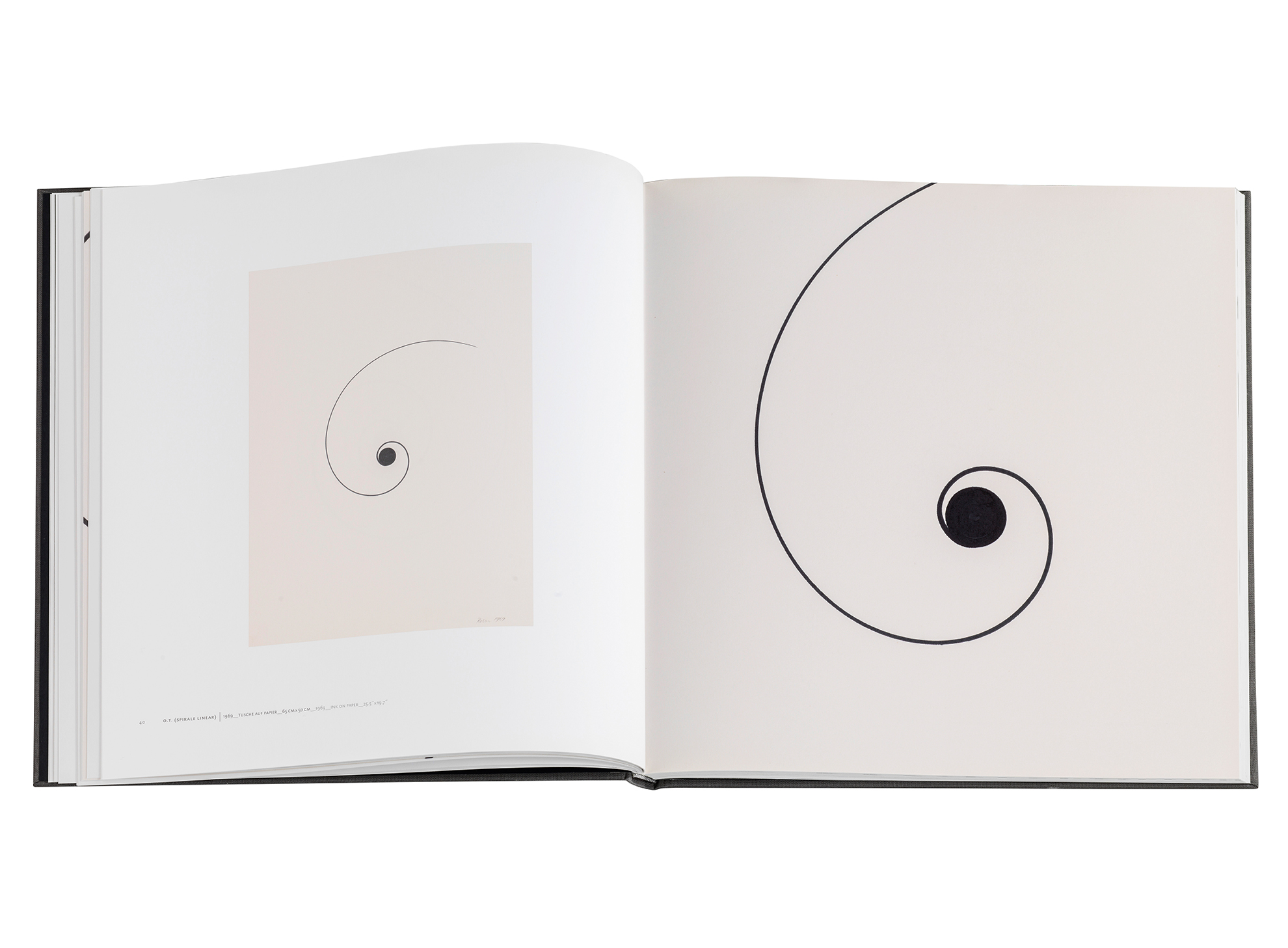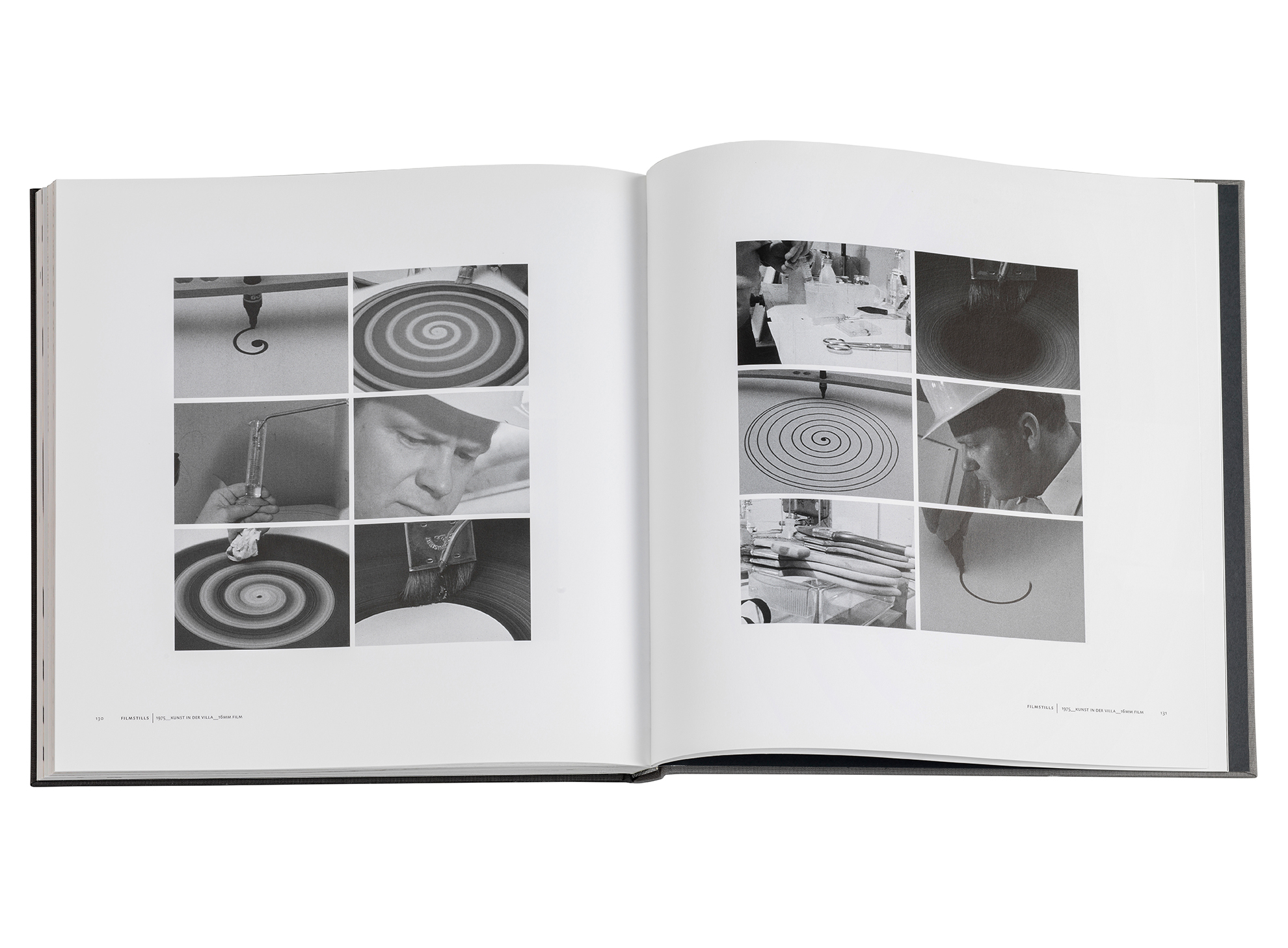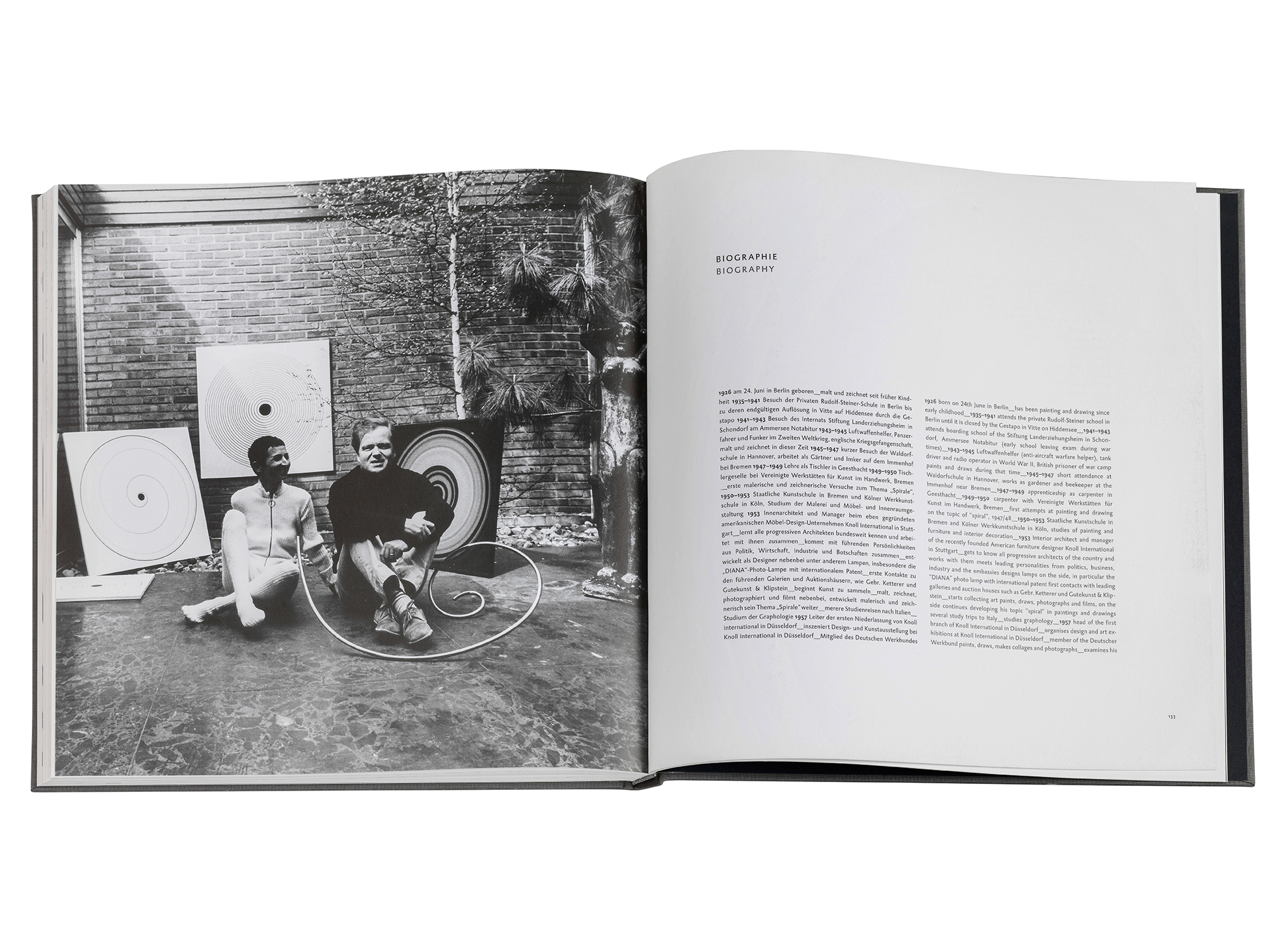ROTAR
Zeichnungen. Drawings.
Dierk Dierking (Editor)
German, English
Zurich 2013
138 pp., 30 x 30 cm
Hardcover
ISBN 978-3-033-03970-4
Price: 45 CHF plus postage

As viewers of his works,
the artist allows us to become
discoverers of new pictorial
worlds ourselves,
and we follow him on
his imaginary journeys.
Under the pseudonym Rotar he dedicated his creative power to a motif that has been fascinating mankind since the beginning of time. Both in mathematics and in art, the boldest mind have considered the spiral of central importance, using reality as inspiration. The “smeared spirals” created in the 1970s anticipate pictures that have today become realistic by means of space telescopes. To create such images, which were manifest in his mind’s eye, Rotar made use of the physical phenomenon of rotation. Technology helped but had to be made controllable by the artist in a process of highest concentration. Even the seemingly simplest result, a linear spiral that appears light enough to float, is extremely expressive. As viewers of his works, the artist allows us to become discoverers of new pictorial worlds ourselves, and we follow him on his imaginary journeys.
Rotar’s position in 20th century art is extraordinary. The sensitive black and white paper works of the 1960s and 1970s are for me the peak of his creative work. This publication presents his major drawings for the first time.
Dierk Dierking
ROTAR
Zeichnungen. Drawings.

Dierk Dierking (Editor)
German, English
Zurich 2013
138 pp., 30 x 30 cm
Hardcover
ISBN 978-3-033-03970-4
Price: 45 CHF plus postage
As viewers of his works,
the artist allows us to become
discoverers of new pictorial
worlds ourselves,
and we follow him on
his imaginary journeys.
Under the pseudonym Rotar he dedicated his creative power to a motif that has been fascinating mankind since the beginning of time. Both in mathematics and in art, the boldest mind have considered the spiral of central importance, using reality as inspiration. The “smeared spirals” created in the 1970s anticipate pictures that have today become realistic by means of space telescopes. To create such images, which were manifest in his mind’s eye, Rotar made use of the physical phenomenon of rotation. Technology helped but had to be made controllable by the artist in a process of highest concentration. Even the seemingly simplest result, a linear spiral that appears light enough to float, is extremely expressive. As viewers of his works, the artist allows us to become discoverers of new pictorial worlds ourselves, and we follow him on his imaginary journeys.
Rotar’s position in 20th century art is extraordinary. The sensitive black and white paper works of the 1960s and 1970s are for me the peak of his creative work. This publication presents his major drawings for the first time.
Dierk Dierking
IMPRINT
© DIERKING 2025









